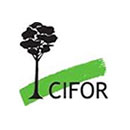Without access to their communal forests many of Zimbabwe’s poor might have perished a long time ago. Two surveys conducted in a typical rural county (the Shindi ward) in the mid 1990s found that on average each family derived over 35% of their income from forest products. In a country where one out of every two rural people consume less than $150 dollars (US) worth of products a year, forest – related income can literally mean the difference between life and death. Most people think Southern Africa’s rural households make their living as farmers. But in reality many depend as much on their surrounding forests as they do on their crops. People who think forests are a luxury that only Europeans and North Americans can afford would do well to read William Cavendish’s ’Empirical Regularities in the Poverty – Environment Relationship of African Rural Households.’ It demonstrates that forest products provide an essential component of rural African livelihoods. Cavendish’s study found that Zimbabwe’s rural families use hundreds of wild plants and animals for food, medicine, fuelwood, building materials, furniture, baskets, livestock fodder, and other uses. Termite mounds and leaf litter provide a major source of fertilizer. Livestock fodder, wild foods, and fuelwood contribute most to household incomes. However, around three quarters of all income comes from a wide range of other natural products. None of these gifts of nature will make the families rich. But they definitely help them survive.
The poorest households depend the most on forest products. Even so, in absolute terms the richer households consume more forest products. Men do most of the hunting and wood related activities. Women sell wild vegetables, fruits, and wine. They also collect firewood and thatching grass and make pottery out of local materials. Both groups sell mats and medicinal plants and pan for gold. Young children rely heavily on wild foods such as mice, small birds, insects, and fruits.
What will happen if these natural resources disappear? Where will these families turn to if someone privatizes their woodlands?
We want you to share Forests News content, which is licensed under Creative Commons Attribution-NonCommercial-ShareAlike 4.0 International (CC BY-NC-SA 4.0). This means you are free to redistribute our material for non-commercial purposes. All we ask is that you give Forests News appropriate credit and link to the original Forests News content, indicate if changes were made, and distribute your contributions under the same Creative Commons license. You must notify Forests News if you repost, reprint or reuse our materials by contacting forestsnews@cifor-icraf.org.
Further reading
To obtain a free electronic version of the paper and / or send comments about this message you can write William Cavendish at: mailto:william_cavendish@new.labour.org.uk




